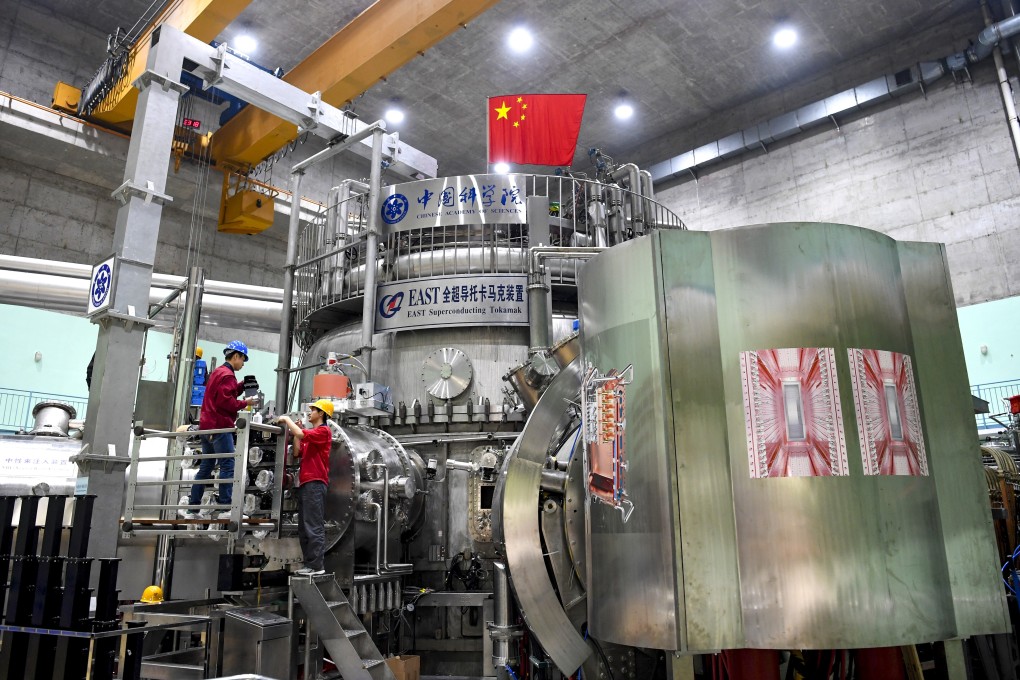Advertisement
Chinese ‘artificial sun’ hits new mark in fusion energy mission
- Facility in country’s east maintains extreme temperatures for five times longer than its previous benchmark
- Similar endeavours are under way in the United States, Europe, Russia, South Korea
Reading Time:2 minutes
Why you can trust SCMP
22

China has reached another milestone in its quest for a fusion reactor, with one of its “artificial suns” sustaining extreme temperatures for several times longer that its previous benchmark, according to state media.
State news agency Xinhua reported that the Experimental Advanced Superconducting Tokamak (EAST) in a facility in the eastern city of Hefei registered a plasma temperature of 120 million degrees Celsius for 101 seconds on Friday.
It also maintained a temperature of 160 million degrees Celsius for 20 seconds, the report said.
Advertisement
Last year, EAST achieved a plasma temperature of 100 million degrees Celsius for 20 seconds.
Friday’s experiment means Chinese scientists have sustained the extreme high temperature for five times longer.
Advertisement
China’s another “artificial sun” project in Chengdu, the HL-2M Tokamak apparatus, operated at 150 million degrees Celsius for up to 10 seconds in an experiment late last year.
Advertisement
Select Voice
Choose your listening speed
Get through articles 2x faster
1.25x
250 WPM
Slow
Average
Fast
1.25x